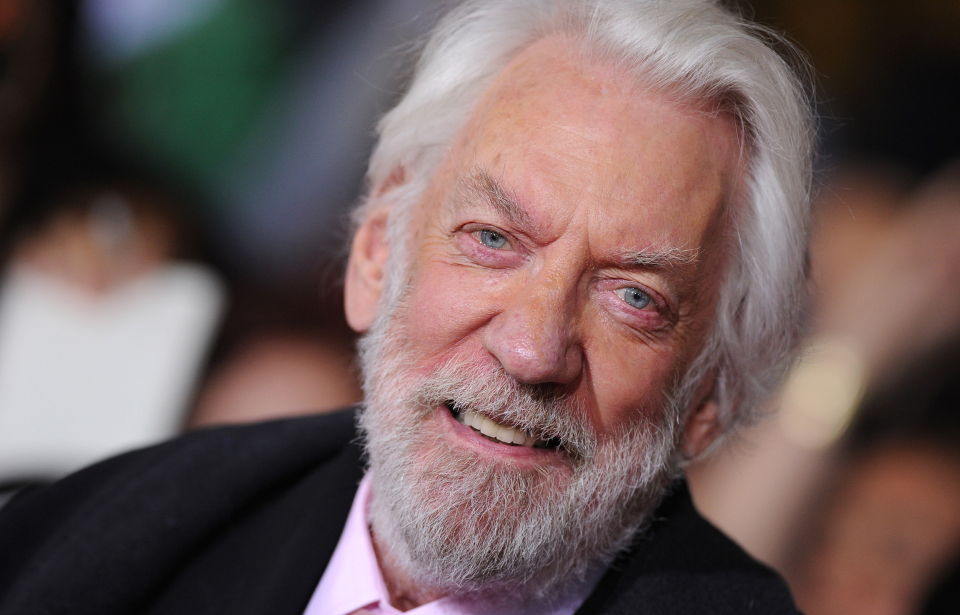Donald Sutherland was one of Hollywood’s most famous Canadian actors, consistently appearing in films over the course of his six-decade career. The award-winning actor was best known for his roles in M*A*S*H (1970), Klute (1971), Pride & Prejudice (2005) and The Hunger Games franchise, and in his 88 years, Sutherland went through some wild things, some of which might surprise even the actor’s biggest fans.
$35,000 flat fee for National Lampoon’s Animal House (1978)
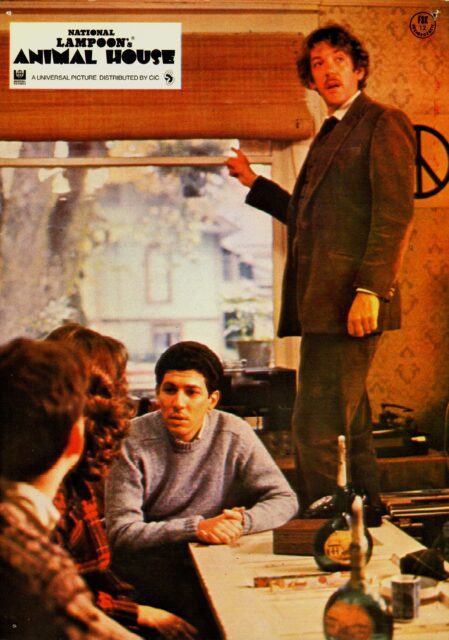
The 1978 film National Lampoon’s Animal House was a surprising success that changed comedy forever. Unfortunately, before it hit the big screen, no one really had any confidence in it. This included Donald Sutherland. Under the promise the film could be made with a production budget of only $3 million, Universal Pictures accepted the project. They wanted a star to be featured and Sutherland became the man for the job.
However, he had his own stipulations for the role. Sutherland only accepted the role because his scenes as Dave Jennings could be shot in one day. Universal offered him $20,000 for the work, plus a percentage of the gross profits. However, Sutherland couldn’t accept. He said, “I can’t take that offer. I just want the money. I don’t want any points in the movie.”
They settled on a deal of $35,000 for a day’s work.
After the film debuted in 1978, Sutherland regretted the deal. Animal House pulled in a whopping $141,600,000 at the box office and has become one of the highest-grossing films of all time. The profits Sutherland was offered would have been two percent of the film’s gross. Instead, his early lack of confidence in the project left him with no stake.
Donald Sutherland was declared dead… For a few seconds
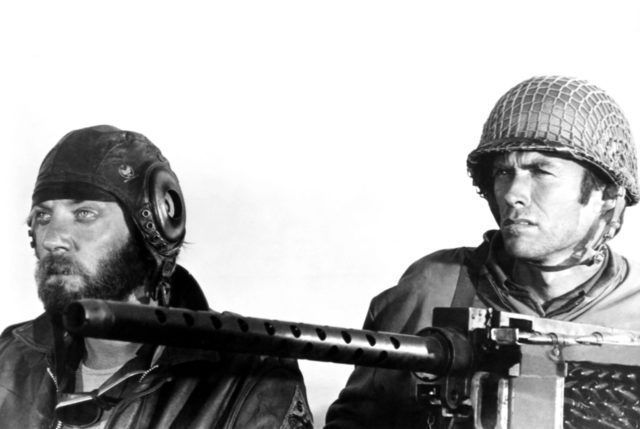
While filming Kelly’s Heroes (1970) in Yugoslavia, Donald Sutherland became very sick. He developed spinal meningitis, an infection of the protective membrane that surrounds the brain and spinal cord.
When he was taken to the hospital, the antibiotics Sutherland needed weren’t available and he slipped into a coma, leaving him in the hospital for six weeks. He was also declared dead for four seconds.
The actor later explained his experience with death, “I saw the blue tunnel, and I started going down it. I saw the white light. I dug my feet in. I didn’t want to go – but it was incredibly tempting. You just go, ‘Aw s**** man, why not?'”
One of Donald Sutherland’s legs was shorter than the other
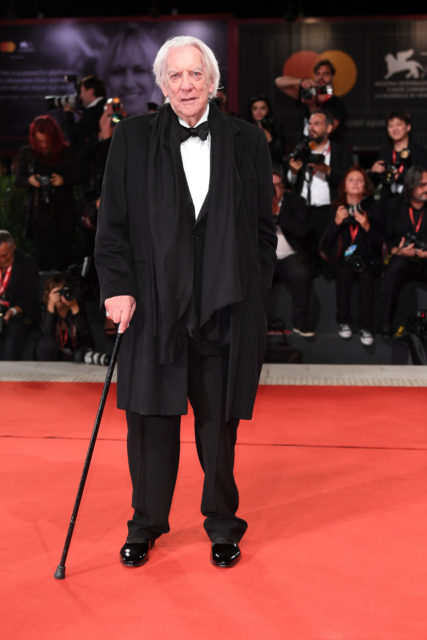
When Donald Sutherland was two-and-a-half years old, he muttered his first word, but it wasn’t “mama” or “papa” like one might expect. Instead, it was “neck.” What a strange first word for a child!
Well, it makes sense when you realize that Sutherland suffered from polio at a very young age and his neck was hurting him. Stiffness in the neck is a common symptom of the disease, and he was trying to explain where he was feeling pain.
Sutherland wound up recovering from polio, but it still had its effect on the actor. Although he stood at a height of six foot, four inches, his left leg was a little shorter than the other, a result of his battle with the disease (leg-length discrepancy is extremely common in polio survivors).
Dual degree in engineering and drama
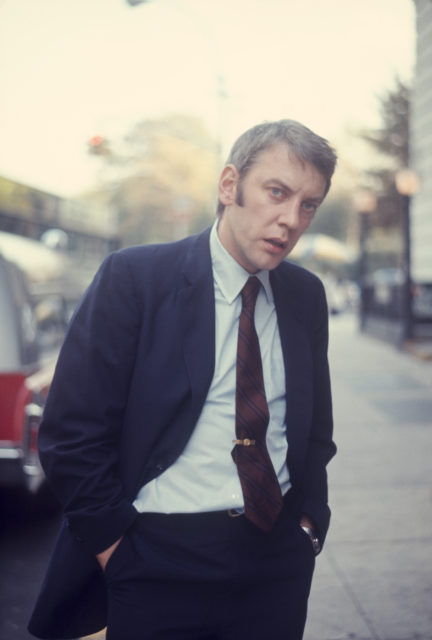
Donald Sutherland always had a taste for the arts, but, as it turns out, he once dreamed of becoming a sculptor, not an actor. However, he didn’t pursue this dream, as his parents urged him to get an education in engineering. To their satisfaction, he attended the University of Toronto with a major in the field.
While at school, Sutherland received his first exposure to acting, landing a small role in a student production of The Male Animal in his junior year. He loved it so much that he added drama as a secondary major. He graduated from the University of Toronto in 1958, with dual degrees in engineering and drama.
Donald Sutherland didn’t land the first film role he auditioned for
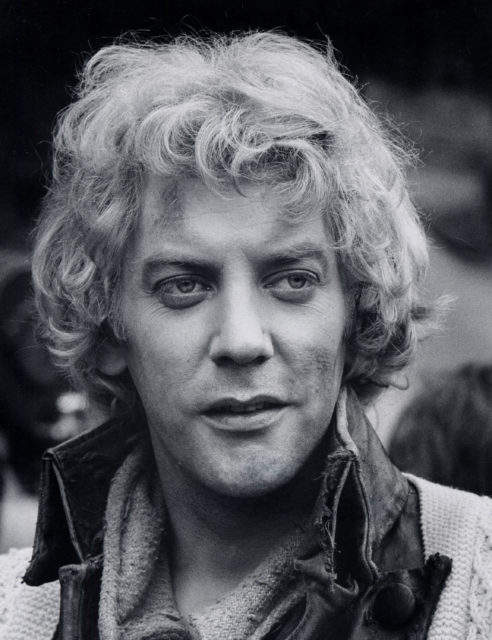
Back in 1962, at the beginning of Doanld Sutherland’s acting career, he was given his first film offer. He auditioned in front of the producer, the writer and the director, and it went really well. When he got home, he said to his first wife, “I thought it went okay,” because he didn’t want to jinx his audition until he knew for sure how they’d received it.
More from us: Farrah Fawcett and Lee Majors Inspired the Hit Song, “Midnight Train to Georgia”
He received a call the next morning and the three confessed to him that they loved him and his acting. That being said, he wasn’t offered the part, with the trio telling him:”We loved you so much, we wanted to explain why we weren’t casting you. We’ve always thought of this as a guy-next-door sort of character, and we don’t think you look like you’ve ever lived next door to anybody.”
Find yourself reminiscing about the past? Subscribe to our weekly newsletter to receive nostalgic content directly to your inbox!
